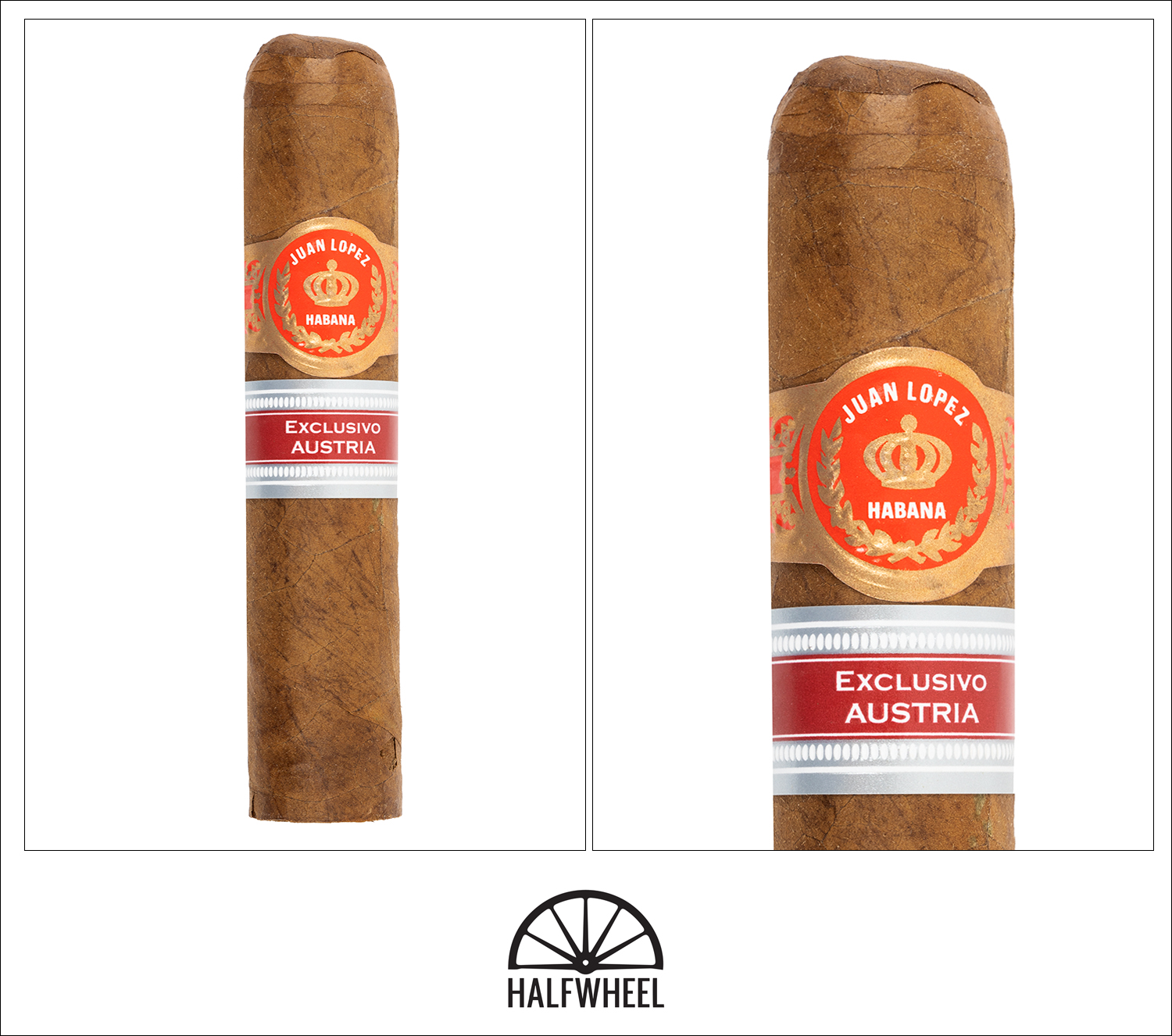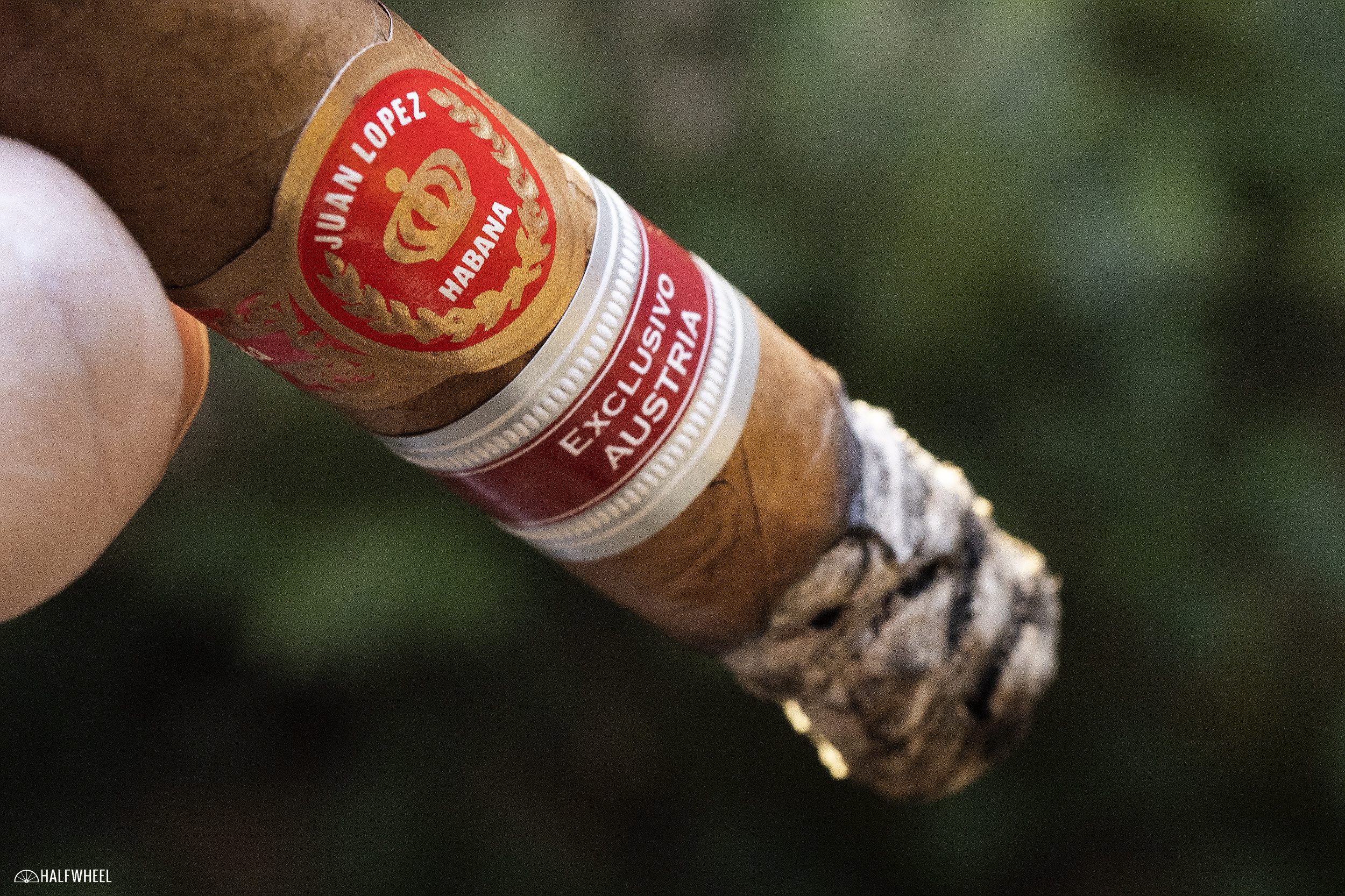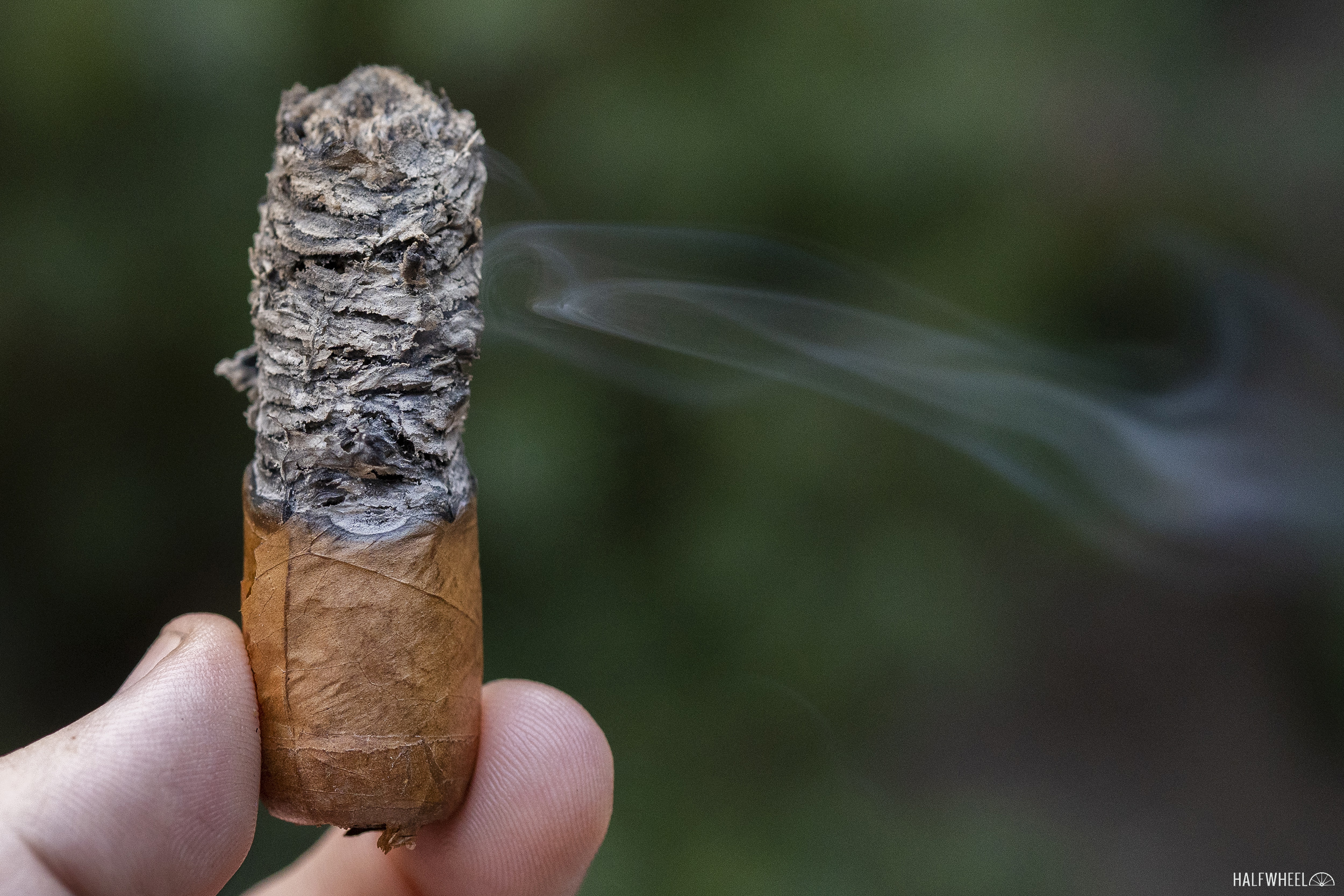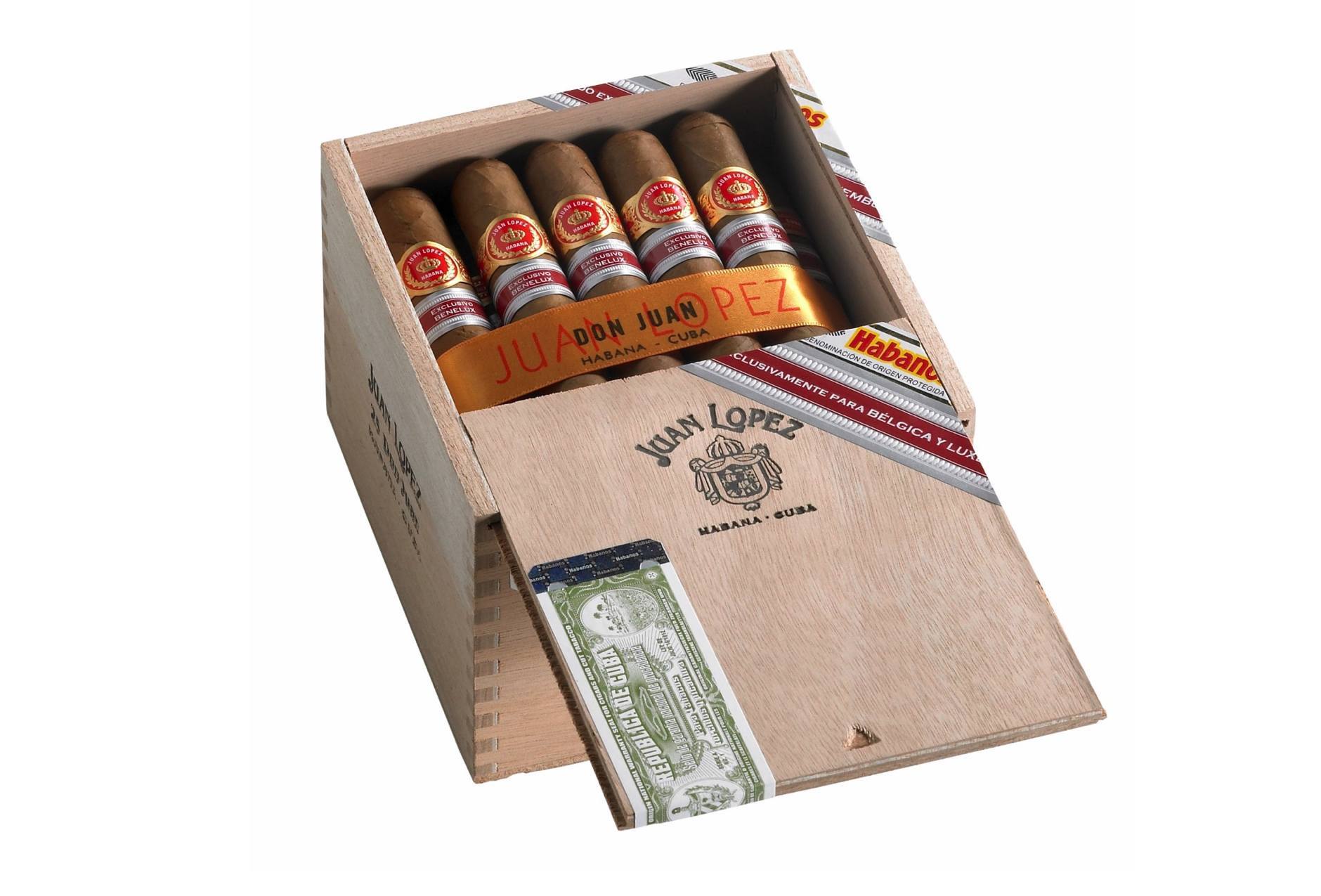I will be the first to admit that I don’t remember every cigar that I have ever smoked or every word I have written for halfwheel. But there are a few, and they are both tied into this review.
In May 2018, I reviewed the Ramón Allones Hermitage, a 2017 Edición Regional release created for Russia. It was only the second Edición Regional release for the country, joining the Bolívar Emperador from 2011.
As someone who used to be fairly obsessed with Edición Regional releases and still maintains a watchful eye on the series but no longer chases them with as much fervor, it got me thinking about countries who weren’t frequent recipients of Edición Regional releases.
Then this cigar popped up on my to-do list.
While Russia has had only two Edición Regional releases, Austria is one of a small group of countries with a singular release. It’s a group that includes Brasil, Bulgaria, Costa Rica, United Arab Emirates, Taiwan, India, Israel, Qatar, Serbia and South Africa. It also includes some specific regions such as Cono Sur, or Southern Cone, which includes Argentina, Chile and Uruguay.
There are also some regions of the world that have only received one Edición Regional release, though there has been some overlap with other countries, such as the Andes B.P.E. region, which includes Peru, which itself received a single release. There was also the El Rey del Mundo Kon Tiki 1973, which was sent to the Los Andes region, the only time that specific region has appeared on a band. There’s also the Nordico-Baltico and Países Nórdicos regions, which while only appearing on only one cigar encompass regions or countries that have received other Edición Regional cigars.
The process of how an Edición Regional comes into being bears mentioning here, as it’s not Habanos S.A. that makes the selection and bestows a cigar upon a country or region, but rather the distributor for the region who makes the request of Habanos S.A. and fronts the money for the cigars’ production.
In this case, Austria is served by 5th Avenue Products Trading G.M.B.H., which also distributes in Germany and Poland. Germany is no stranger to the series, with 11 cigars created just for the country. Additionally, 5th Avenue has commissioned four Edición Regional cigars that bear its name.
The Ideales comes in the petit robusto vitola, which measures 4 inches (102mm) long with a 50 ring gauge. There have been no shortages of cigars to have used this same vitola, though most have been Edición Regional releases—16 to be exact—or other special releases, such as the Selección Petit Robusto sampler from 2012, a 10-pack of cigars which included two each of the size in the Cohiba, H.Upmann, Montecristo, Partagás and Romeo y Julieta marcas.
In fact, there are only two regular production cigars from Habanos S.A. that share this size: the aforementioned Romeo y Julieta Petit Churchills and the Hoyo de Monterrey Petit Robustos.
It was released in 2011, with 2,500 individually numbers boxes of 10 cigars produced.

- Cigar Reviewed: Juan López Ideales Edición Regional Austria (2011)
- Country of Origin: Cuba
- Factory: Not Disclosed
- Wrapper: Cuba
- Binder: Cuba
- Filler: Cuba
- Length: 4 Inches
- Ring Gauge: 50
- Vitola: Petit Robustos
- Est. Price: $30 (Box of 10, $300)
- Release Date: 2011
- Number of Cigars Released: 2,500 Boxes of 10 Cigars (25,000 Total Cigars)
- Number of Cigars Smoked For Review: 3
As we get into the warmer months in Phoenix, it feels a bit odd to be smoking a cigar that looks like it was marketed as one for the colder months, but the appreciative sentiment remains as being out in 100-degree weather shares some related inconveniences with freezing weather. The Juan Lopez Ideales looks fairly Cuban in terms of a caramel-hued and occasionally mottled wrapper, though there aren’t as many veins that might give away its origin. There is an interesting parchment-like texture to the leaf that I can’t recall feeling in recent memory, something I’m guessing is attributed to its age and provenance but has me inquisitive about. It is rolled well from a visual perspective, and it’s on the firmer end of the spectrum for a Cuban cigar, showing hardly any sponginess for which cigars from the island tend to be known. The foot of the cigar offers aromas of pretzels, graham cracker and unsalted peanuts, almost an exercise in naming dry, crunchy snacks in a pantry. The cap feels flatter than average, and once clipped, reveals a slightly tight draw and dry profile that skews more towards graham crackers without the sweetness, replaced by a bit of orange marmalade.
The Juan Lopez Ideales opens with a medium-bodied, fairly dry and tight profile save for some tangy cedar, but one that has some flavors to unpack and identify. As mentioned there’s a bit of cedar to go with some black pepper, and once the first retrohale is taken, a good amount of pepper to really wake up the nose. There are a few puffs where I get a bit of Heinz 57 steak sauce as a glazing flavor as well, though by the time I’m sure enough to write it down, the burn line has already moved on into the second third. Technical performance is very good, while flavor is medium-plus, body is medium, and strength is medium-plus.

Even though this cigar is coming up on its 10th birthday, it has plenty of spunk and energy, specifically black pepper via retrohales. Some of the bigger flavors tend to recede a bit, and in one of the three samples the result is quite good, meshing the wood and pepper into a place where neither is fighting for control of the profile but rather working together, with a bit of age seemingly mellowing things out, about the only time I’ve considered this to be a cigar that has as many years on it as these do. By the midpoint, the cigar is medium-plus in terms of flavor intensity, possibly even full bodied because of the pepper, but other flavors behind that are thin. It’s still good, but without a more balanced backing note, the cigar does feel a bit singular. The burn line in the first cigar gets quite a bit off, something that might be due to the cracked wrapper, but regardless of the cause warrants a touch-up. The other two samples are much better and burn quite well, with flavor generally medium-plus to medium-full, strength creeping up from medium-plus, and body hovering between medium and medium-plus. 
There’s a bit more of a woody tang and bite as the Juan López Ideales gets into its final third, as well as more hearty black pepper through the nose. It’s thick and punchy, but still packs a bit of tingle. The tongue meanwhile gets coated with a mix of heavy cedar and black pepper, the combination leaving a lasting tingle. The finish can go off the rails a bit as heat seams to have an adverse effect on the profile, which is a shame given that it shortens the cigar a bit. Other than a bit of a funky burn line in one cigar, technical performance has been very good. The cigar finishes near full in flavor, medium-plus in body, and a sneaky medium-full in strength.

Final Notes
- The box code for these cigars was BMO AGO 11.
- Given the size of the vitola, this seems like the kind of cigar that might come in a much larger packaging format, even up to a 50-count cabinet. I know those have fallen out of favor in recent years, but it would seem that it might be a more appropriate format.
- That said, I do like the accessibility of the 10-count box.
- Which brings me to the Juan López Short Robusto, an Edición Regional for Andorra from 2009—though not released until 2011—which shares this same vitola and comes in 50-count boxes.
- But the Juan López Chiado 1864, an Edición Regional for Portugal from the 2014 cohort that is also in this same vitola, came in 10-count boxes, though in a single row layout.
- Even after nine years, these bands are still a pain to get off without damaging the wrapper.
- The 25,000 cigars produced for the release are the minimum that Habanos S.A. requires for an Edición Regional release.
- This is more of a general observation, but a cigar has to fundamentally be good, not just come in a specific size. I think that sometimes the size of the cigar is marketed ahead of how the blend performs in that smaller vitola. As we have seen time and time again, certain blends just don’t work in certain sizes.
- On that note, this cigar has a bit thicker ring gauge, which still gives the blend a bit of room to breathe and offer a more complete profile than what I’ve experienced in more slender sizes.
- Even still though, the quickness with which the burn line moves makes it tough to really examine this cigar in thirds, as we do with other cigars reviewed on this site.
- The Juan López Ideales isn’t an overly strong cigar, but it does have a good bit for its smaller size. Only one of the three warranted some white sugar after smoking.
- 5th Avenue Products was founded in 1989 by Heinrich Villiger of Villiger Cigars. It was the world’s first joint venture for the exclusive import and distribution of Habanos S.A. products.
- Yes, I’ve seen it written as Fifth Avenue as well; I’m going with what’s on the company’s website.
- The cigars for this review were purchased by halfwheel on the secondary market. We paid $30 per cigar.
- Final smoking time was one hour on average.
For a nine-year-old cigar in a short vitola, the Juan López Ideales sure has a lot to offer, maybe even too much. The cigar starts with fairly vibrant flavors and doesn't let up for most of its 60 minute smoking time, and while that would generally be a good thing, the exuberance of the cedar and pepper are too often left on their own without proper support from mellower backing flavors. This, in turn, limits the cigar's ability to develop true complexity and the opportunity to show balance, hallmarks of any great cigar. That said, it had no problem keeping my attention and once done, I did find myself agreeable to the idea of smoking another both right away and at a future point in time. So while I'm not completely sold on the Ideales as they smoke now, they do seem to have quite a bit of life left in them, which makes them promising to think about returning to down the road.


